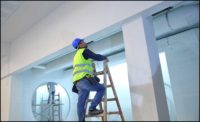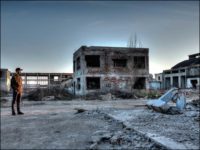The relationship between resilience and sustainability was discussed in an earlier column, and it was suggested that sustainability is an important component for a truly resilient building but that it was not the whole picture nor was it the primary resilience consideration for most buildings. The recent call for public comments on proposed changes to the International Energy Conservation Code (IECC) provides an opportunity to revisit this topic and to discuss, in greater detail, a few of the issues raised.
The IECC recently changed the process by which modifications are made away from the traditional code process to something similar to how technical standards are maintained. That process involves a committee that makes the final decisions but with input from any interested party. The recently closed period for proposed changes resulted in 258 proposals for the commercial energy portion and 168 on the residential side that cover a wide range of topics. In this column, I will discuss the changes to the commercial code related to air barriers, on-site energy, and lighting controls in terms of their relationship to enhanced building resilience.
Multiple proposals were received regarding the requirements for an air barrier in new construction. Although several specific topics are addressed, for the purpose of relating the changes to resilience, the most relevant are those suggesting the tightening of the building envelope, reducing the allowable air leakage. From an energy standpoint, a tighter envelope will generally provide a clear benefit — the building will use less energy for heating and cooling. The points of discussion regarding what level of leakage should be allowed therefore center on costs and practicability. Viewed from a resilience perspective, more restrictive requirements for air barriers are a positive development overall. Less air leakage means a building will be able to maintain a livable temperature for a longer period of time without a functioning HVAC system, particularly when combined with thermal mass. However, depending on the building use and external climate, there may be problems with a buildup of, for example, humidity, which may require opening windows, negating the benefits of the tighter envelope.
Moving to on-site energy, the majority of the proposals deal with increased requirements for the use of solar or wind generation for the building. Again, when considering resilience, greater on-site energy generation will certainly be a benefit. Less reliance on the external grid should lead to an increased ability to maintain the functionality of a building after an adverse event, at least at some minimum level. An important question, though, is how reliant should the building be on wind and solar-generated at the site? If the assumption that the building can be used to shelter in place, or for longer-term occupancy, is based on the availability of the on-site power, what happens if that is not available? Do the designers need to add extra energy storage to plan for the possible lack of wind or solar after an adverse event? For example, will the power source be available after a tornado or earthquake? How much storage is required, or does a further backup, such as a diesel generator, need to be supplied?
Regarding lighting controls, the proposals of interest require automatic dimmers on certain types and locations of lighting. Again, this seems like a positive good for enhanced resilience, as the ability to decrease lighting to the minimum required also reduces energy demands, leading to a better chance the building can remain at least minimally functional after an adverse event. However, some of the proposals require automatic control and discourage or even disallow manual control of the dimming. Does this make sense from a resilience perspective? For example, should occupants be able to overrule the automation to decrease lighting levels, even when the algorithm suggests they should be higher? What if the authorized personnel for modifying the automated system are not available? Looking at scenarios outside of normal operation, these are the types of questions that have to be asked when considering resilience.
The big question, which hasn’t been addressed, is how much weight should be given to resilience when making decisions about building code requirements today? This discussion has not taken place, and the debate is almost entirely about whether or not the proposed changes make sense for normal operation. If enhanced resilience is the goal, then this will have to change, and resilience will only be obtained/enhanced when it is actively considered during the development of both code requirements and individual project goals.





